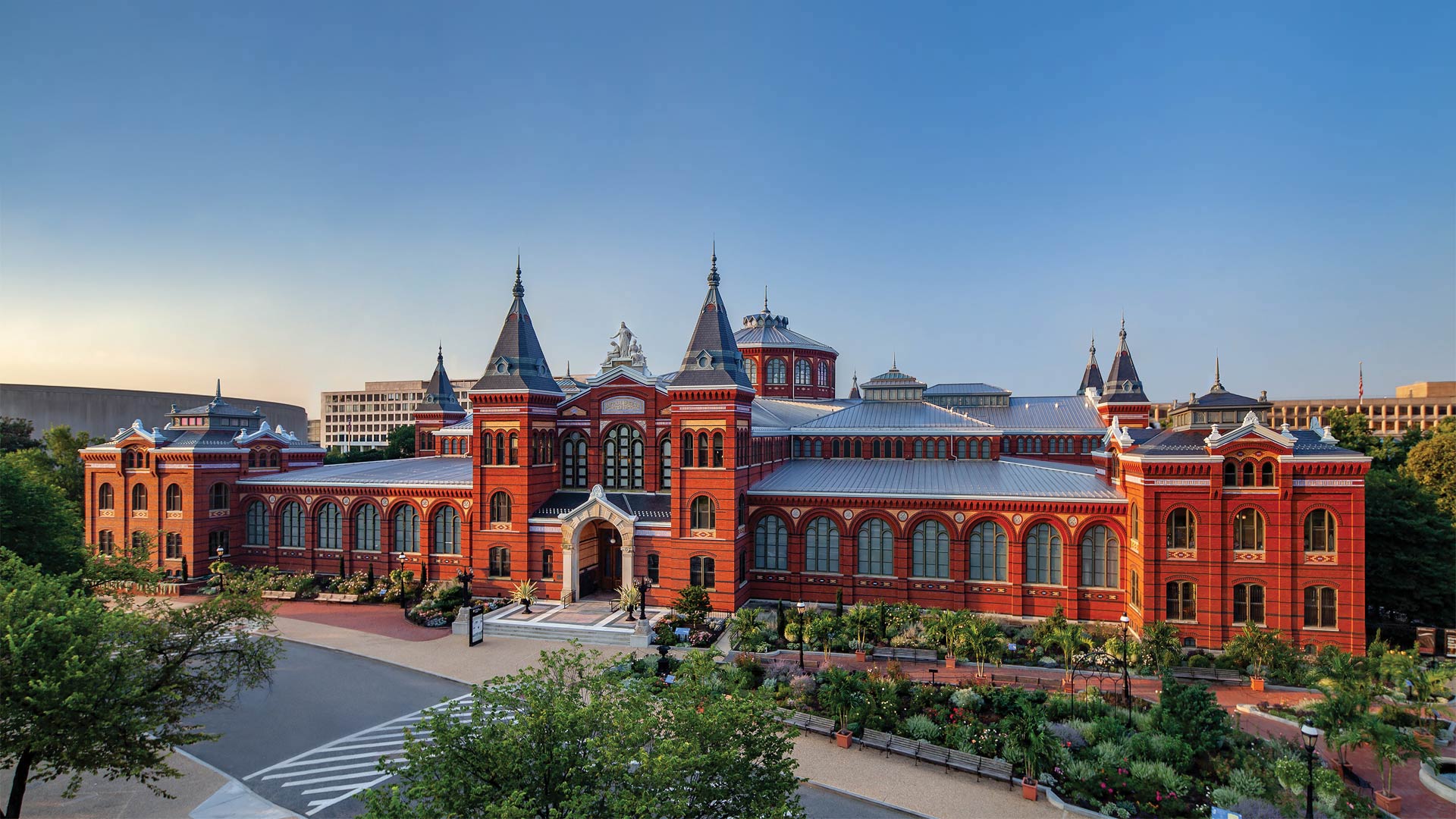华盛顿特区史密森艺术与工业大厦 The Smithsonian Arts and Industries Building in Washington DC (© Ron Blunt/Courtesy Smithsonian)

华盛顿特区史密森艺术与工业大厦 The Smithsonian Arts and Industries Building in Washington DC (© Ron Blunt/Courtesy Smithsonian)
175th anniversa
In 1846, when Congress authorized an institution 'for the increase and diffusion of knowledge,' no one could have predicted what the Smithsonian Institution would eventually become. Today, on our 175th anniversary, the Smithsonian is the world's largest museum, education, and research complex. And in the decades that I have worked at here—as an educator, curator, museum director, and now as Secretary—I have watched us grow into a vital and vibrant 21st-century institution: conducting groundbreaking research, becoming a national leader in K-12 education, creating new museums that represent the American experience more fully, and equipping our audiences to tackle the world's most pressing challenges.
The Arts and Industries Building (AIB), pictured here, exemplifies our role as both a cultural steward and a hub of innovation. The Smithsonian's second-oldest building, AIB opened in 1881 as the US National Museum. An architectural icon located at the heart of the National Mall, its soaring halls introduced millions of Americans to wonders about to change the world—Edison's lightbulb, the first telephone, Apollo rockets. Since the 19th century, when it hosted early flight experiments and the country's burgeoning natural history collections, AIB has been a place for creativity and invention.
This forward-looking spirit is embodied in FUTURES, the Arts and Industries Building's large-scale, dynamic exhibition opening in November 2021. Focusing on interactive discovery and collaboration, the exhibition will feature art installations, technology debuts, interactive experiences, and ideas that preview humanity's next chapter. (This entry was written by Lonnie G. Bunch III, secretary of the Smithsonian Institution.)
175周年纪念
1846年,当国会授权一个机构“增加和传播知识”时,没有人能够预测史密森学会最终会变成什么样子。今天,在我们175周年之际,史密森学会是世界上最大的博物馆、教育和研究中心。在我担任教育家、馆长、博物馆馆长的几十年里,现在作为秘书,我目睹了我们成长为一个充满活力的21世纪机构:开展开创性的研究,成为K-12教育的国家领导者,创建更充分代表美国经验的新博物馆,让我们的观众能够应对世界上最紧迫的挑战。
如图所示,艺术与工业大厦(AIB)体现了我们作为文化管理者和创新中心的角色。史密森学会第二古老的建筑,AIB于1881年作为美国国家博物馆开放。作为位于国家广场中心的建筑标志,其高耸的大厅让数百万美国人看到了即将改变世界的奇迹——爱迪生的灯泡、第一部电话、阿波罗火箭。自19世纪早期飞行实验和该国新兴的自然历史收藏开始,AIB就一直是一个创造力和发明的地方。
这种前瞻性的精神体现在2021年11月艺术与工业大厦(art and Industries Building)的大型、充满活力的展览开幕式上。该展览将以互动发现和协作为重点,展示艺术装置、技术首次亮相、互动体验和思想,预展人类的下一篇章(这篇文章是朗尼G。布奇三世,史密森学会秘书。)
评论已关闭